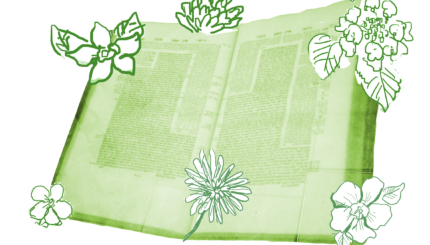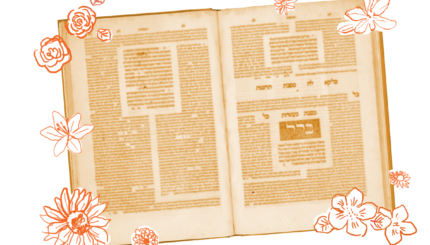Nestled in South Arkansas, El Dorado is a small town with a big history. Recently, this small town reminded us just how small the world is — especially, of course, the Jewish world.
At the beginning of 1921, El Dorado, Arkansas, was a sleepy town of only about 4,000 people. But when oil speculator Samuel Thompson Busey’s well struck oil there on January 10 of that year, people began flocking to the small town. By 1922, the town’s population had boomed to 35,000 residents — including several Jewish families.
The Jews who came to El Dorado mostly opened stores that catered to the needs of the oil field workers in town. By 1927, there were 124 Jews living in El Dorado, supporting both an Orthodox and Reform congregation. Like the rest of El Dorado, the Jewish community’s fortunes rose and fell with oil production. After several years, the boom ended, due to overdrilling and the Great Depression, both of which knocked the price of oil down below the cost of production.
As the Encyclopedia of Southern Jewish Communities notes:
With the resurgence of the Jewish community after World War II, El Dorado Jews reorganized a congregation, founding the Reform Temple Beth Israel. The Arkansas Jewish Assembly, a statewide organization of Jews in the state, played an important role in encouraging them to create the new congregation. Beth Israel met in a rented hall on North Washington Street for much of its first decade. In the early 1950s, they began to raise money for a permanent building. Local gentiles contributed to the building fund, and a former Broadway star who lived in the area headlined a fundraising concert held at the local high school. Irving Pesses owned the construction company that built the synagogue. The fundraising was so successful that when the synagogue was completed in 1955, the congregation owned it outright.
The oil boom years have long passed, and most Jews moved on long ago to find greater economic opportunities elsewhere. The Orthodox congregation no longer exists, and the congregants of Reform congregation Beth Israel have invited a local Mennonite congregation to use the building. Last year, the last living members of the El Dorado Jewish community — Janey Pilsbury, her mother Janet Stuart, and David Fineberg — officially donated the building to the Mennonite community. They brought the remaining Judaica and artifacts from the building to Jackson to be protected and preserved within the the Museum of the Southern Jewish Experience’s collection.

Closing that chapter of Jewish life in a community is difficult, but while speaking with Janey, she shared fond memories of her experience growing up in the temple, and raising Jewish children in El Dorado. Beth Israel never had a full-time rabbi, and her father Joe Stuart was often a lay leader.
The story of El Dorado was already intriguing— but then I was reminded just what a small world it is when I got a surprising phone call last week from from someone who also had fond memories of the temple: Chip Boardman had seen something about the artifact donation on Facebook, and called to learn more. Seeing as I had yet to write this blog post or dig into this aspect of the story, together we realized that someone at the ISJL had taken photos of the artifacts and posted them online.
Turns out, Education Fellow Leah Apothoker saw the donation plaque and recognized the name Sydney Felsenthal. Mr. Felsenthal is her uncle Walter Haines’ grandfather, which makes him… her aunt’s grandfather-in-law? Which makes him Leah’s, um… I think we’ll just call that machatunim (Yiddish for in-laws).
Walter posted the photos Leah sent, and when Chip saw them it brought back memories of growing up in El Dorado. He also knew some of the names on the plaque and was looking for more information about the status of the congregation. His parents were married there, his brothers became Bar Mitzvah there, and he remembered sleeping on the red velvet chairs.
It was wonderful to talk with him about his memories, and assure him that the remnants and artifacts of the congregation will be well cared-for in perpetuity. The Judaica will be preserved and possibly replanted within active congregations in our region to honor the legacy of Jewish life in El Dorado.
To learn more about the history of the El Dorado Jewish community, visit its entry in the Encyclopedia of Southern Jewish Communities! It’s another way the ISJL works to ensure that these stories and small-world connections are accessible and preserved for years to come.
Jewish food, holidays, Torah, Shabbat, history, blogs and more in your inbox – sign up now!
Torah
Pronunced: TORE-uh, Origin: Hebrew, the Five Books of Moses.




